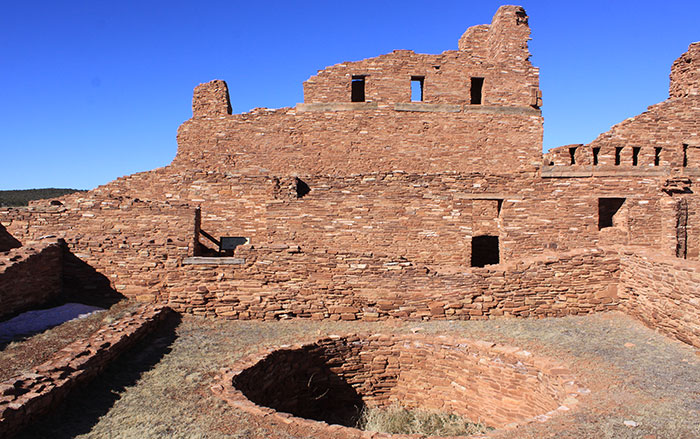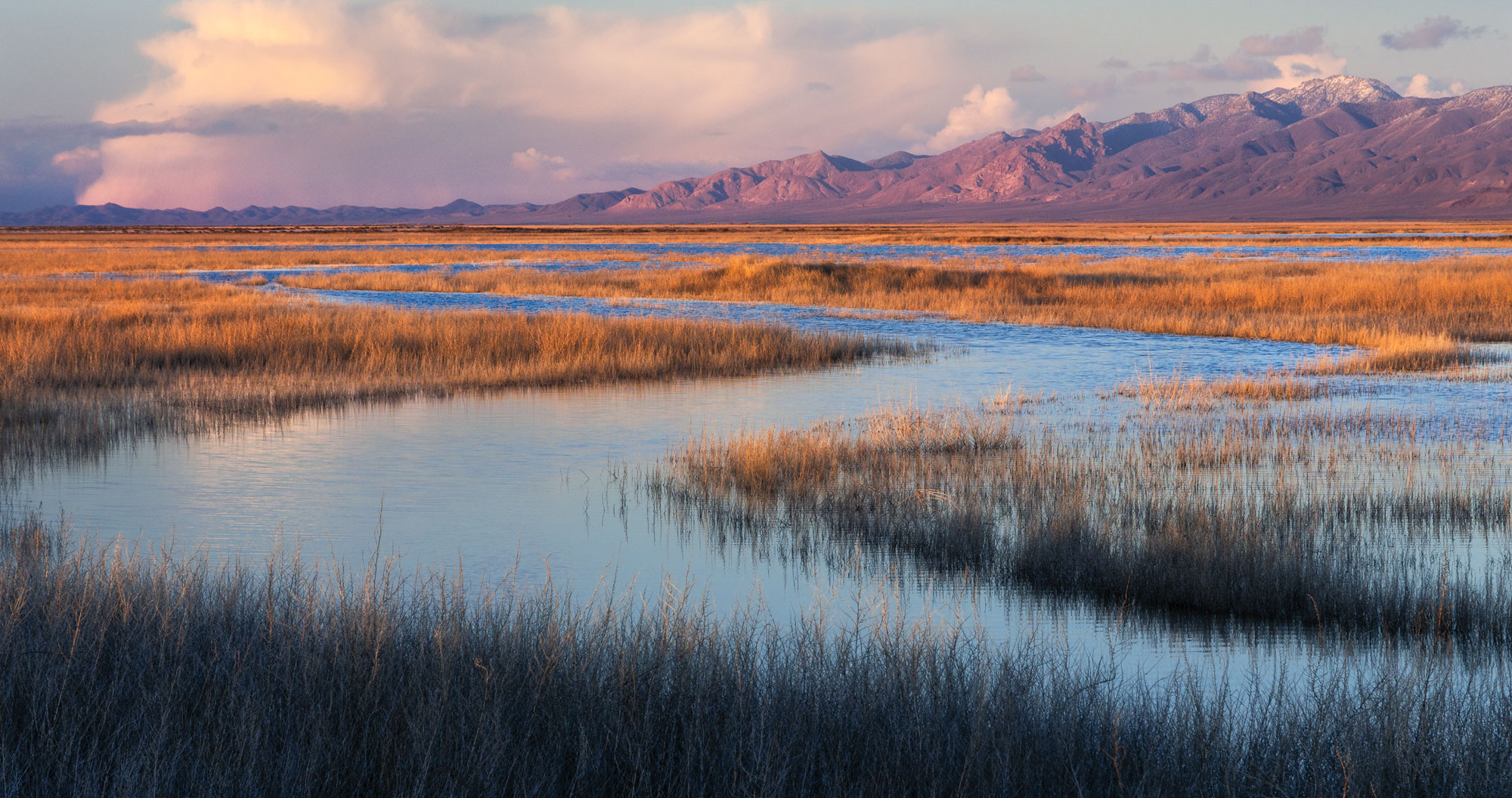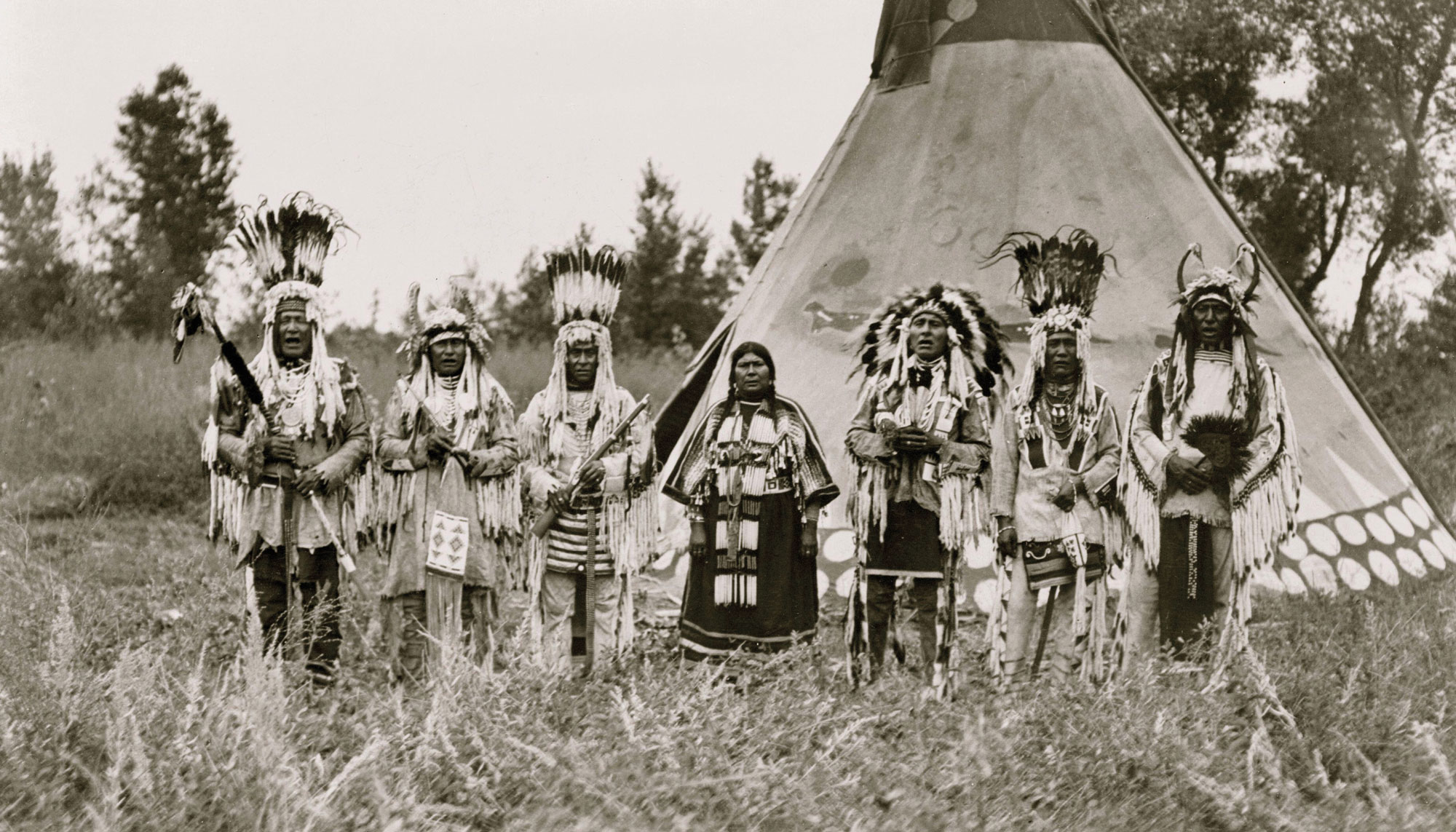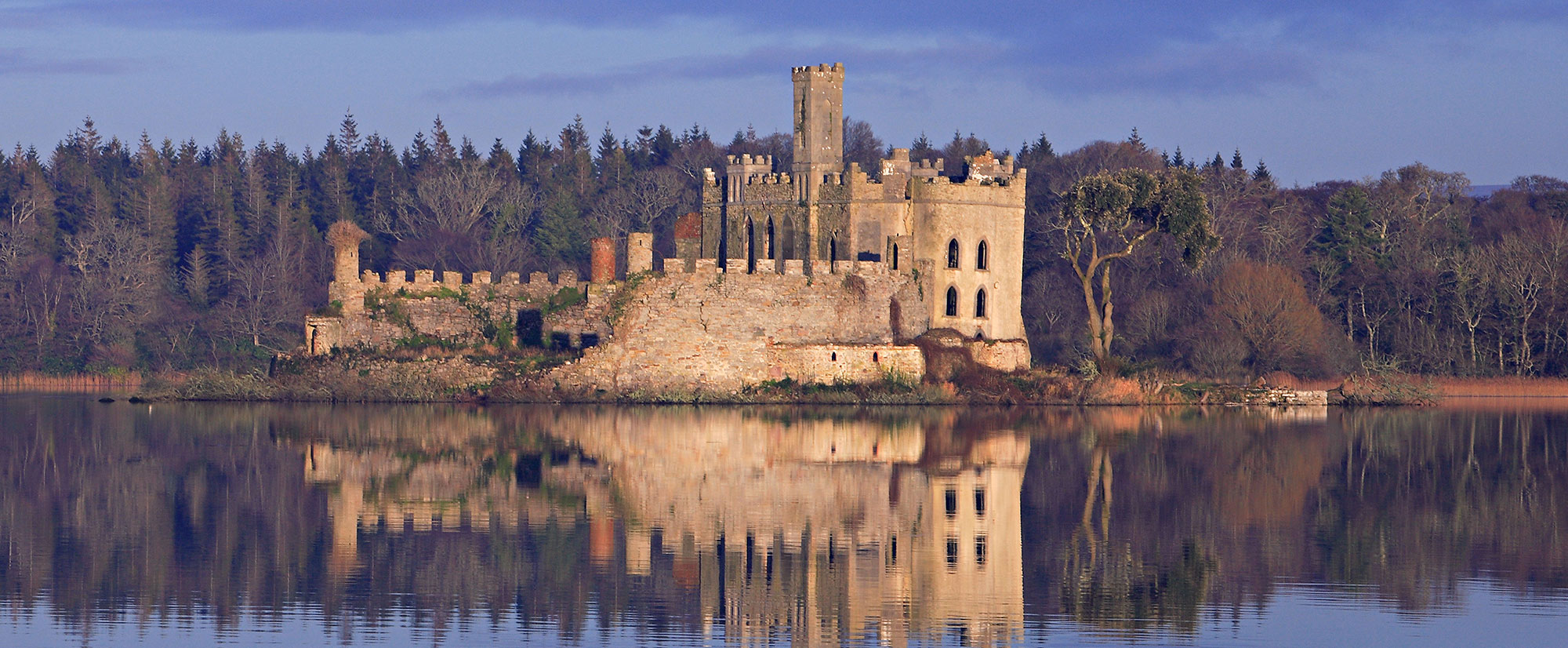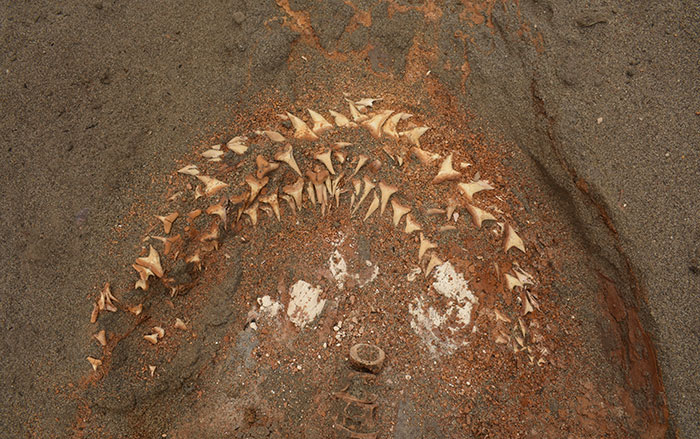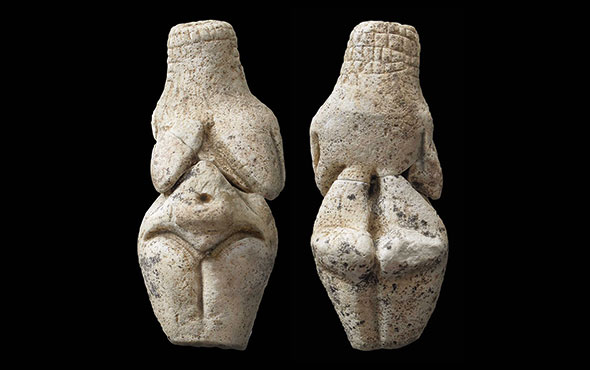

The Plains of San Agustin stretch some 50 miles across west-central New Mexico and are surrounded on three sides by mountain ranges. In the late summer monsoon season, vibrant wildflowers make the brownish-green scrubland pop with color. Archaeologist Lisbeth Louderback of the University of Utah and botanist Bruce Pavlik of the Natural History Museum of Utah head west on U.S. Route 60 from the small town of Magdalena, then turn into a picnic area on the side of the highway. “The Mirabilis is out, that’s good,” Pavlik says, scanning the vegetation and pointing to a short plant with purple flowers often found growing alongside or near potato plants. “Let’s see if we can find the potatoes.”
Louderback and Pavlik are looking for a tiny species of potato called Solanum jamesii, or the Four Corners potato, which they believe has been an often-overlooked food source exploited by people in the region for millennia. The Four Corners potato takes its name from the Four Corners area of the southwestern United States, where Arizona, Utah, Colorado, and New Mexico meet. Today, S. jamesii plants are relatively common across central and southern Arizona and New Mexico, but are found in only a few locations in southern Utah and Colorado—typically near prehistoric settlements. Their range also extends as far east as western Texas, and as far south as northern Mexico.
For members of Native American communities in the region, the Four Corners potato is a symbol of the connection many feel with their ancestors. Ethnographic and ethnohistoric accounts, as well as oral narratives, confirm that S. jamesii has long been well known to Native American tribes in the Four Corners area, including the Apache, Diné (Navajo), Ute, and Pueblo peoples such as the Hopi and Zuni, and is still consumed by them. Utah Diné Bikéyah, a nonprofit indigenous organization that works to preserve and protect cultural and natural resources on Native American lands, holds a dinner each October on Indigenous People’s Day that features delicacies such as grilled cactus, acorn spoon bread, and cushaw squash bisque. Recently, the dinner has also included the Four Corners potato, which, in 2018, was paired with smoked river trout. “Resources like the potato are about stewardship,” says Cynthia Wilson, a Diné tribal member and director of Utah Diné Bikéyah’s Traditional Foods Program. “They’re about reciprocity and kinship with the ecosystems and cosmos that surround them.”
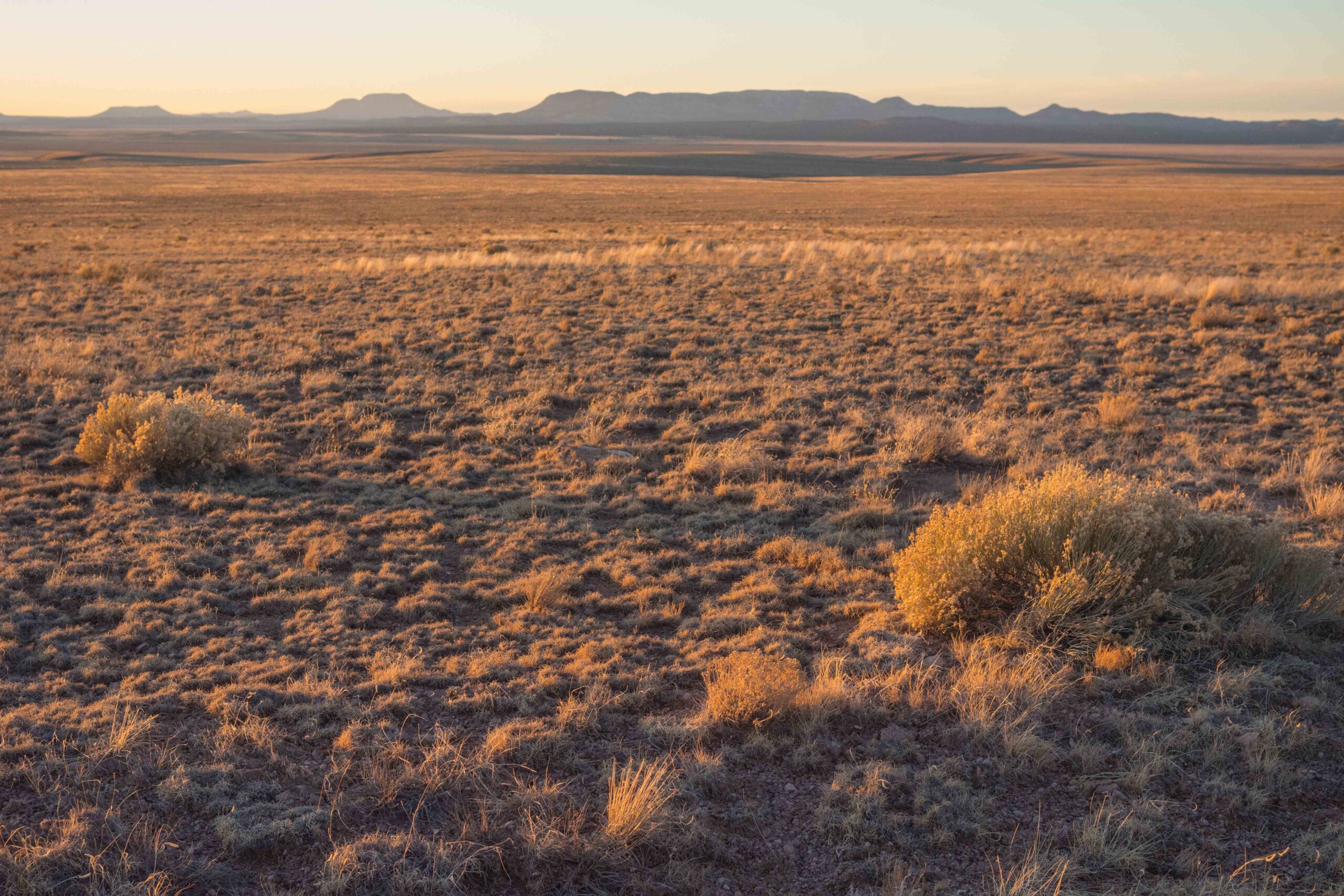
Almost all domesticated potatoes eaten today are of the species Solanum tuberosum, which was first cultivated between 7,000 and 8,000 years ago in the high Andes of modern-day Peru. Millennia later, following the Spanish conquest of the Inca Empire in the sixteenth century, the potato spread to Europe. There, it quickly became a dietary staple and, as an inexpensive source of many more calories per acre than other staples, is thought to have been instrumental in urbanization and industrialization. But recent archaeological studies show that people in the American Southwest were consuming potatoes up to 11,000 years ago—some 3,000 to 4,000 years earlier than were people in South America.
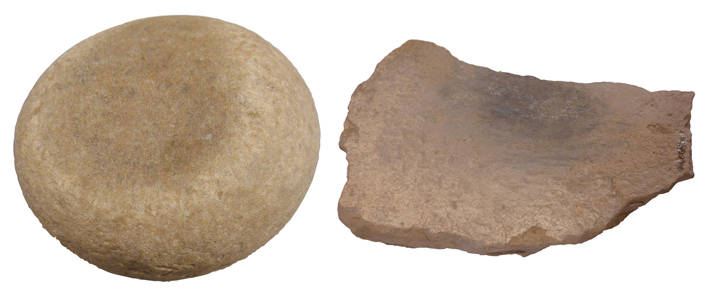
One of the earliest sites of human occupation in the Four Corners region is North Creek Shelter in southern Utah, near the small town of Escalante. The rock shelter is a natural feature at the base of a south-facing, buff-colored sandstone cliff on the Colorado Plateau. Between 2004 and 2008, excavations there led by Joel Janetski of Brigham Young University unearthed evidence of seven distinct periods of occupation, along with several shorter occupations between the longer ones. Radiocarbon dating of plant remains shows the earliest settlement of the site occurred some 11,500 years ago, and the last was around 150 years ago. Unlike animal bones or corncobs, whose relatively robust structures can help preserve them for long periods, potatoes have soft tissues that disintegrate over time. Therefore, they are difficult to find in the archaeological record—but that doesn’t mean they aren’t there.
Among the many artifacts archaeologists recovered at North Creek Shelter were 196 stone tools known as manos and metates. Manos are handheld stones used to grind raw foods against metates, or long stone slabs, into a form such as flour that can be easily consumed. Early analysis of residues from the tools focused on identifying small seeds from sage, saltbush, and grasses. In order to get a broader sense of what residents of North Creek Shelter ate over the millennia, Louderback began looking at starch residues embedded in the tools’ surfaces. To her surprise, Louderback identified starch granules that belonged to S. jamesii. The earliest of these potato granules were found on tools dating to between 10,000 and 11,000 years ago. The granules were also found on other tools dating to around 7,000 years ago. During both these periods, the people living at the site are believed to have been hunter-gatherers. The presence of these starch granules shows that they were grinding Four Corners potatoes into flour and exploiting a food source that archaeologists had not previously recognized as part of their diet. “We would expect people to exploit tubers, and now we know how to look for them in the archaeological record,” says archaeologist Nicole Herzog of the University of Denver, who has worked with Louderback to establish new microscopic methods of identifying potato starches. “It’s nice to find confirmation of their presence, especially at an early site like North Creek Shelter.”
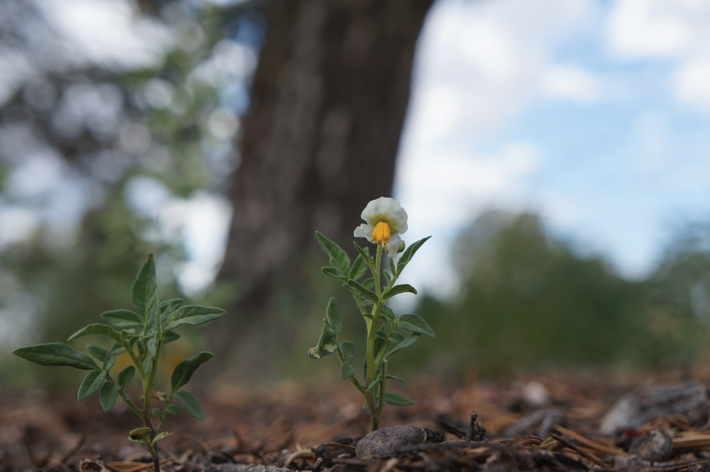
Although the Four Corners potato is extremely small—about the size of a walnut—it stands out for its hardiness and packs a great deal of nutritional heft. Compared with domesticated white potatoes, ounce for ounce, the Four Corners spud contains twice the protein, zinc, and manganese, and three times the calcium and iron. S. jamesii are rather short plants with thin stalks and small, delicate, oblong leaves. Although they tend to grow best in fertile, silty soils like those found in shallow drainages, the plants are robust enough to survive in a host of different growing environments, such as mulch, gravel, and pine needles. The plant is thus well adapted to the complex piñon-juniper ecology of central New Mexico, where it is most abundant, as well as to the broader landscape of the Four Corners.
Like any other potato variety, whether wild or domestic, S. jamesii’s tubers are attached to the plant’s roots. These tubers save up nutrients to help the plant survive stressful times of year—winter, for example—and to store sufficient energy to thrive during the next growing season. Whether collected or cultivated, tubers offer a food that is chock-full of the plant’s naturally stored nutrients. Four Corners potatoes grow close to the surface, making them relatively easy to dig up. In addition, one S. jamesii plant can produce up to 500 small “progeny tubers” (also called potatolings) in a single growing season, thus dramatically increasing the overall number of potatoes produced. Consequently, there are enormous benefits to using the tuber as a dietary resource. “In prehistory, the potato would have provided a reliable source of carbohydrates, protein, and minerals to hunter-gatherers in the American Southwest and significantly improved dietary quality,” Louderback says. “If this species was cultivated or domesticated, then its benefits would be amplified. Foraging would be replaced by tending, and the assurance of a harvest would remove uncertainties that resulted from climatic variations.”

S. jamesii plants can survive multiple years of drought conditions, as the flowering and fruiting cycle of the plant depends heavily on its exposure to moisture during the July through August monsoon season. During periods of ecological stress, such as in drought years, it becomes nearly inactive. “Jamesii is so remarkable among potatoes,” says geneticist John Bamberg of the USDA Potato Genebank. “It has the most resistance of any species to late blight, which is the worst fungal potato disease, and it has strong resistance to the Colorado potato beetle. The tuber can survive freezing temperatures and can be dormant for up to fourteen years.” However, one challenge to using S. jamesii as a food source is that the potatoes are naturally high in glycoalkaloids, compounds that are extremely bitter to the taste. Chemist David Kinder of Ohio Northern University notes that preparing the potato in a type of mineral clay called bentonite makes it more palatable by sweetening its taste when it is cooked. According to Cynthia Wilson, it was—and still is—common to boil the tubers in white clay to reduce their bitterness and make them edible. “In Navajo, we call this glēsh—potato clay,” she says.
Native peoples of the American Southwest are believed to have cultivated corn, squash, and beans as early as 4,000 years ago. Known as the “three sisters,” these crops were originally domesticated in Mesoamerica and later brought north. Now that archaeologists have uncovered millennia-old evidence that potatoes, which are indigenous to the Southwest, were consumed in the area as well, they are trying to learn whether the tubers were cultivated in addition to being harvested from naturally occurring stands. In the summer of 2019, Louderback and Pavlik searched the Plains of San Agustin for living S. jamesii plants. They operated on the theory that if the plants were found in association with ancient dwellings, this would indicate that ancient peoples may have intentionally cultivated them. In the past, particularly at the northern extent of the species’ range, in southern Utah and Colorado, the potatoes have indeed been identified almost exclusively near ancient settlements. “The question was why,” Louderback says. “Why would so many potato plants be so close to habitation structures, but not appear in other places across the landscape?” The potato plants were there, researchers hypothesized, because ancient people had planted them.
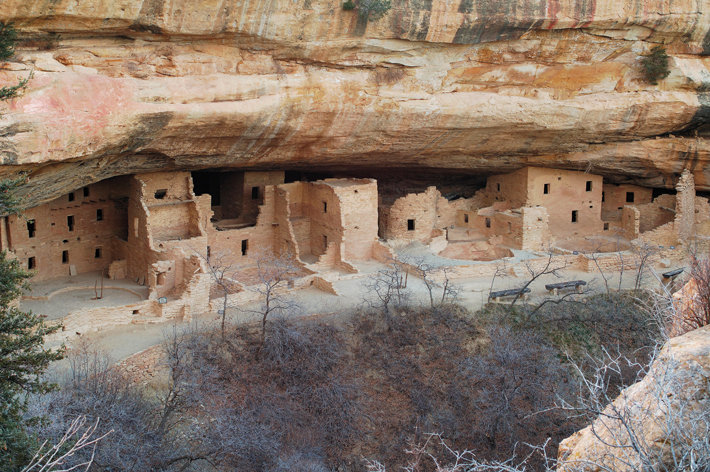
During surveys led by Kinder, researchers found substantial populations of S. jamesii growing at several archaeological sites in Colorado and New Mexico that were inhabited by Ancestral Puebloans in the late first to early second millennium A.D. Ancestral Puebloans cultivated corn, beans, and squash, and Kinder believes the evidence suggests that, at least at some sites, they grew potatoes as well. The present-day potato populations found near Ancestral Puebloan buildings, he suggests, could be descended from plants that were tended in garden patches hundreds of years ago. “We think that the wild potatoes were cultivated,” says Kinder, “and that numerous modern stands of this plant in the Four Corners region are legacy populations reflecting ancient management.”
At Mesa Verde in the southwestern corner of Colorado, a site known for its cliff dwellings, researchers found several S. jamesii populations in association with ruins, including one “mega-population” in Navajo Canyon below Chapin Mesa that measured a mile long and up to 100 yards wide. At Chaco Canyon in northwestern New Mexico, home to ancient multistory buildings, another mega-population was found stretching along a two-mile length of arroyo. And, at Chimney Rock, in southwestern Colorado, some 60 miles east of Mesa Verde, the potatoes were found growing near constructed dams, as well as amid rubble from ancient houses. Given Chimney Rock’s high elevation, more than 7,000 feet above sea level, and its remoteness from other wild potato populations, Kinder suggests the potato plants may have been transported and intentionally planted there. Since Mesa Verde and Chaco Canyon are also at the northern reach of the potato’s range and isolated from other stands, it is likely S. jamesii was planted at these sites, too. In addition, by studying the mega-population in Mesa Verde’s Navajo Canyon, researchers have determined that its potato plants include the vast majority of genetic variations known to occur in the species. According to Kinder, this indicates that Mesa Verde served as a sort of gene bank, a place where potatoes could be grown centrally and then dispersed, offering a steady supply of plants that could be grown elsewhere.
The question of whether potatoes were cultivated near North Creek Shelter, where evidence of potato consumption dates back to many thousands of years before the Ancestral Puebloan potato patches, is more complicated. Just five small populations of potato plants have been found in the Escalante Valley. One is some 500 feet from North Creek Shelter, while the next closest is nearly 100 miles away, near the archaeological site of Newspaper Rock. However, even if this were evidence that potatoes were cultivated rather than simply harvested at North Creek Shelter, the question of when cultivation first occurred would remain open, given that the site was occupied as recently as 150 years ago. Indeed, when nineteenth-century settlers from the Church of Jesus Christ of Latter-day Saints arrived in the area near Escalante, they called it “Potato Valley,” and descendants of these early settlers described eating S. jamesii potatoes throughout the Great Depression as a supplement to other crops. “Detecting the early stages of S. jamesii domestication would challenge a long-established scientific paradigm regarding agricultural origins and food choices among hunter-gatherers in North America,” Louderback says. “It would identify the Four Corners as a previously unknown center of plant domestication.”

Back on the Plains of San Agustin, Louderback, Pavlik, and their colleagues carefully flag potato plants. Some have delicate white and yellow flowers, and a few have fruit. The researchers map the plants with GPS points to plot out their density and distribution, much as archaeologists would flag pottery sherds to identify areas of habitation, and collect samples so geneticists can continue to assess the genetic diversity of S. jamesii. Researchers hope these samples will help them tease out patterns of how the species moved—or was moved by ancient peoples—across the landscape.
After two days of surveying plants around Magdalena, the researchers split up into smaller teams and disperse throughout the Four Corners area to cover as much ground as possible in the upcoming week. One team heads north to Chaco Canyon and then to Chimney Rock. Another team goes east, to Texas. Louderback and Pavlik point their SUV west, toward the Show Low region of the Mogollon Rim in Arizona. As they climb into their vehicles, Louderback explains that, in a few weeks, they are going to do an additional survey to the northwest, in the Bears Ears area of southern Utah.
In the end, due to drought conditions, Louderback identifies plants at only half the sites she visits. “We found some good samples in Chaco Canyon and in Escalante, but none in Bears Ears,” she reports. “We’ll probably have to go out again next year.” And, if history is any indication, the Four Corners potato will be there, just as it has been for the last 11,000 years.



